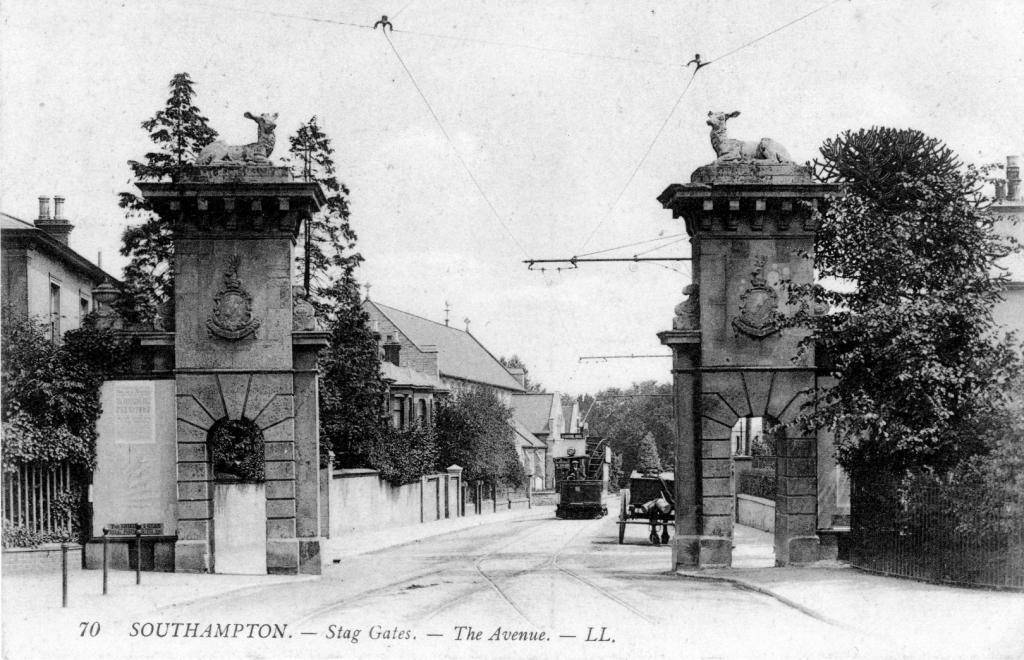Imagine a small, spare man, of some years past middle age, wearing an enormous wig.
He is being jarred and jolted by the movement of his carriage as it rolls through Portswood, down Bevois Valley and up Rockstone Lane on the main road into Southampton.
It is 1723 and, Charles Mordaunt, 3rd Earl of Peterborough, is in search of somewhere to build a country estate where he can live with his second wife, former opera singer, Anastasia Robinson, away from the vicious gossip of London society.
He passes a mount, climbing up to his right and is then enchanted by a view of a curve in the river.
He rents, and later buys Padwell Farm and an adjacent piece of land which had belonged to the St Denys Priory, converts a farmhouse into a modest mansion and the Bevois Mount Estate is born.
This harp-shaped area of land has remained intact for the ensuing three hundred years. Inevitably it has changed out of all recognition to the estate that the poet, Alexander Pope, described as ‘Beautiful beyond imagination’.
From about 1850, more and more land was sold off for housing.
The actual mount is no more, exploited and sacrificed for its gravel to make the modern streets which overlay the gardens, orchards, and fields of the old earl’s estate.
The earl enjoyed twelve years of retirement at Bevois Mount and his widow lived there for a further twenty years until her own death in 1855.

The earl’s nephew, General Sir John Mordaunt, inherited the estate, and he erected a memorial to his uncle which can still be seen at Tudor House Museum.
Successive owners and tenants included a minor Romantic poet and a couple who were great, great, great, great grandparents of David Cameron.
Probably, the owner who had the most impact on the wider town as well as on Bevois Mount, was William Betts. He was an engineer and built the original Southampton Pier.
When he bought the estate in 1844, he set out to make the approach to his house more impressive by building a set of gate posts fit for a gentleman landowner. Stag Gates, as they were named, stood for little over 70 years before succumbing to the supremacy of trams and other traffic, but their destruction is mourned to this day.
By 1870 much of the estate had been built over.
A typical family lived in Clovelly Cottage, Avenue Road. Alfred McFadden and all six of his sons worked at Ordnance Survey, which at that time was at the top of London Road.

OS was a major local employer and many of its draughtsmen were also talented artists. Typical of these were Rowland and Frank McFadden who exhibited their paintings at the Royal Academy and Frank contributed engravings to the iconic book, ‘Vestiges of Old Southampton’.
Several suffragettes lived in our area; they fought for votes for women for many years. One of the most well-known was Charlie Marsh who lived in Livingstone Road for a while.
Charlie helped to organise the visit of Emmeline Pankhurst to Southampton in 1911.
Like many suffragettes Charlie was sent to prison for breaking windows, and she spent some time on hunger strike.
Bevois Mount, in common with other areas of Southampton, lost residents to the sinking of the Titanic, the Great War and other tragedies of the twentieth century.

Arthur Halestrap, born in Cedar Road, in many ways embodies the events of that century. He was invited to look over the Titanic by a family friend, served in the First World War, survived Spanish flu and served with the Special Operations Executive in the Second World War.
He died at the age of 106 in 2003 – one of the Last Tommies.
The boundaries of Bevois Mount – mainly Bevois Valley and The Avenue – have been the same for 300 years and have resisted plans for a six-lane motorway being driven through the area in the 1960s and changes to ward boundaries far more recently.
Ally Hayes is a tour guide with SeeSouthampton and a member of Bevois Mount History.
Ally's book A Walk Up the Avenue is available from October Books.









Comments: Our rules
We want our comments to be a lively and valuable part of our community - a place where readers can debate and engage with the most important local issues. The ability to comment on our stories is a privilege, not a right, however, and that privilege may be withdrawn if it is abused or misused.
Please report any comments that break our rules.
Read the rules hereLast Updated:
Report this comment Cancel